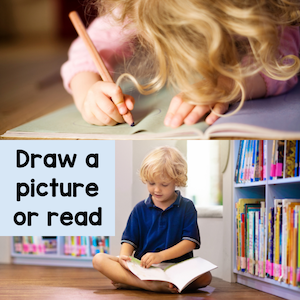Social Emotional LearningAs any teacher knows, dealing with kids can be a bit like herding cats. They're often full of energy, easily distracted, and prone to outbursts of emotion. But while dealing with chaotic classrooms may be exhausting, it's also important to remember that behind all the noise and mayhem are real kids with real feelings. That's why it's so important to incorporate social and emotional learning (SEL) into our teaching. By teaching our kids tools and strategies for regulating their emotions, we can help them to develop good mental health habits that will last a lifetime. Look for ways to support your students' mental health. When they're feeling good, they're able to learn and be successful in school. That's why social emotional learning (SEL) should be part of your classroom management plan. SEL is all about teaching kids the skills they need to regulate their emotions and avoid meltdowns and anxiety attacks. SEL ToolkitThere are many different tools that can be used for SEL. Here are a few that may be suitable for your SEL toolkit. Drawing: When students start to feel overwhelmed, encourage them to take out a piece of paper and start drawing. It doesn't matter what they draw, as long as it's something that makes them feel calm and relaxed. Headphones: Have headphones available to help kids focus. These can block out distracting noise and help them concentrate. Music: Sometimes all it takes is a little bit of music to help kids refocus and get back on track. Sensory Activities: Squeezing and releasing fists or tapping on the body can help kids release tension and calm down. Pushing against a wall can also sometimes help. Deep breathing: This is a simple, but effective strategy that can help kids relax and avoid an anxious state. Reading: Getting into a good book can sometimes redirect attention. Quiet spot: A spot without distractions allows kids to just settle and calm down. Splashing water on face: This could also snap a person out of an anxious state. Taking a walk: Going for a quick walk or maybe delivering a message to another classroom or the office can often redirect and calm a person down. Counting: Focusing on counting may help to calm panic feelings. Sitting on a wiggle cushion or a ball: This may help with sensory movement and allow focusing. **** Check below to get a free copy of calming strategies posters for your classroom. **** One way to support social emotional learning is to provide these tools and strategies for kid's mental health. We can teach them how to identify and label their feelings, how to understand and cope with big emotions, and how to develop positive relationships. Additionally, we can provide opportunities for them to practice these skills through social-emotional learning activities and games. By supporting social emotional learning, we can help our kids to develop the skills they need to lead happy and fulfilling lives. We need to be patient, kind, understanding, and present with our kids. They deserve our time and attention. When we give them that, we're helping to build a foundation of trust and love that will last a lifetime. Ultimately, every child is different and will respond to different tools and strategies. The important thing is to have a variety of options available so that you can find what works best for each individual child. By incorporating SEL into our teaching, we can help our kids to develop the skills they need to thrive both inside and outside the classroom. Calming Strategies PostersHere are some posters that might be helpful for your students. They are available for free for my newsletter subscribers. Click here to get your copy. With a toolkit of SEL strategies available, you will no longer wonder how to deal with a chaotic classroom.There may still be times when mayhem happens, but kids will have the necessary tools to manage their emotions and classroom control will be attainable. Related Posts
0 Comments
Leave a Reply. |
About Me Charlene Sequeira
I am a wife, mother of 4, grandmother of 9, and a retired primary and music teacher. I love working with kids and continue to volunteer at school and teach ukulele. Categories
All
|













 RSS Feed
RSS Feed